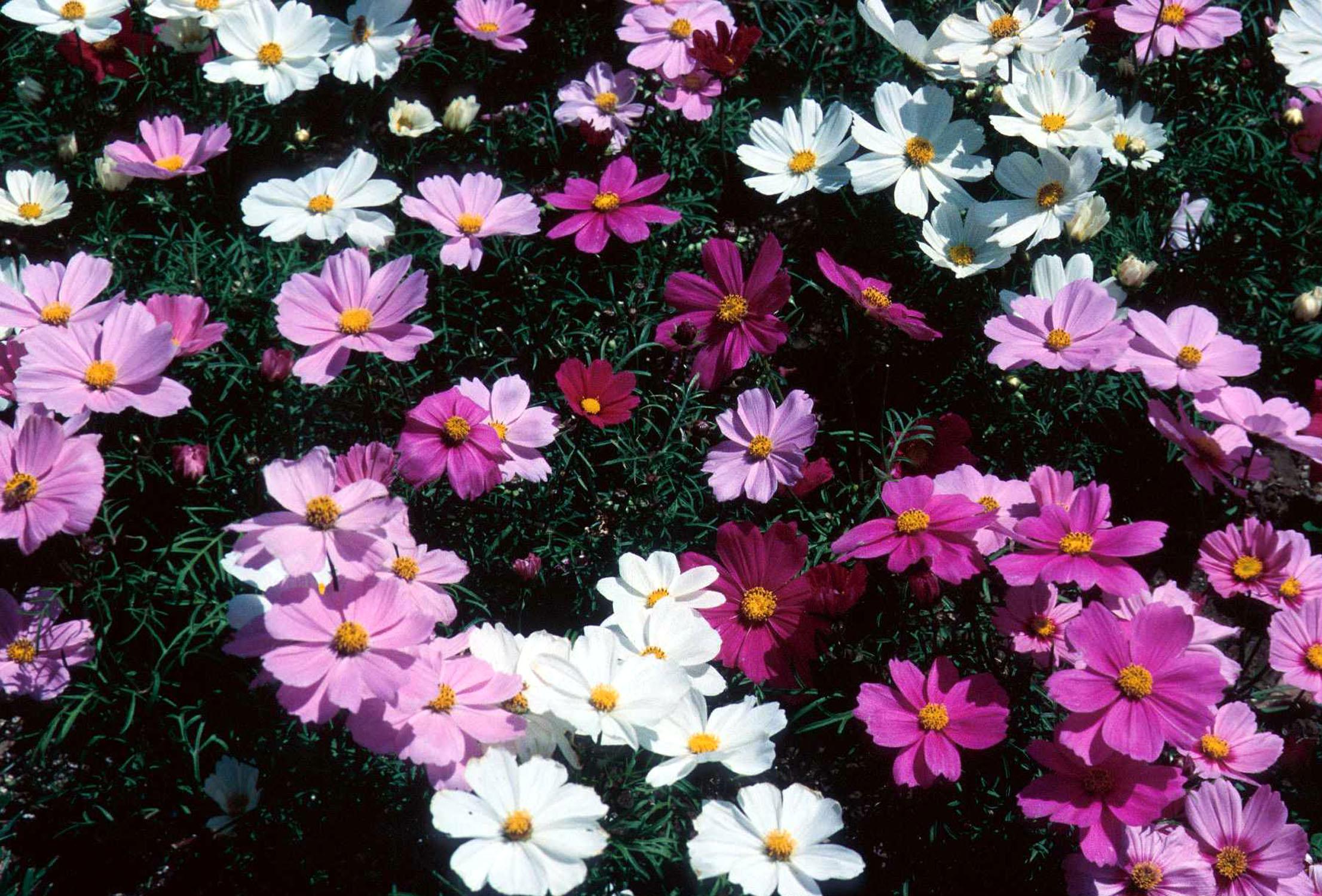Information Possibly Outdated
The information presented on this page was originally released on July 1, 2002. It may not be outdated, but please search our site for more current information. If you plan to quote or reference this information in a publication, please check with the Extension specialist or author before proceeding.
Bring back old-fashioned cosmos in modern garden
By Norman Winter
MSU Horticulturist
Central Mississippi Research & Extension Center
An old-fashioned plant at the New Orleans Botanical Garden recently just blew me away with its beauty. It was an old cosmos variety called Sensation. Cosmos are native to Mexico and related to coreopsis and rudbeckias.
Gardeners need to take a stand and bring back several cosmos varieties. If you are thinking of the orange cosmos, you need to think again because I am predominantly referring to the Cosmos bipinnatus. These have daisy-like flowers that are 2 to 4 inches wide in shades of burgundy, pink, lilac and white with orange centers. They are borne on stems of airy fern-like foliage for weeks on end during the growing season.
These cosmos are easy to grow from transplants and seed. In fact, they are so easy to grow from seed, you should sow succession plantings to have blooms the entire growing season. They are a superior flower for cutting and displaying in a vase.
You still may find them at garden centers as transplants, but check the seed racks, too. Researchers have grown them in past years for the Fall Flower and Garden Fest in Crystal Springs.
Plant seeds or nursery-grown transplants in loose, well-drained planting beds. Fertility need not be high. Seeds germinate in five to seven days with flowers, and you are cutting bouquets in eight to 10 weeks. Thin the seedlings or space transplants 12 to 36 inches apart depending on your variety.
Deadheading old flowers keeps those gorgeous blooms coming. Fertility need not be high; in fact, keep nitrogen levels on the low side or plants will produce too much foliage and top growth at the expense of the flowers. The cosmos also gives a perennial-like performance by reseeding, but the resulting flowers may be different from the parent. In other words, you may plant a dwarf selection and the resulting volunteer seedling look like a taller variety. Water sparingly, but water deeply when you do to train roots to go deep.
Considering the cosmos plants grow from 2 to 4 feet suggests planting to the back of the border. I would suggest using them in a cottage garden setting against a white picket fence. The tallest varieties may need a garden wire to help hold them up or better yet, use salvias like Victoria Blue, Indigo Spires, the large blue anise or Brazilian sage to give the support. The spiky flowers of the salvias will combine perfectly with the more rounded cosmos. Another good companion is the cleome.
Those of you have not yet ventured into tall plants for the garden will want to go with the Sonata series. This is a Flueroselect Award Winner and is probably the most popular. These are dwarf 2-foot tall plants in four colors and a mix.
The Psyche series is an old favorite with large 4-inch, semi-double blooms on 4- to 5-foot tall plants. Sensation, the one I saw at the New Orleans Botanical Garden, is an All-America Selections Winner from 1938 and is still impressive in display gardens throughout the South. Let this be a lesson in that when a plant is an award winner, such as an All-America Selections or Mississippi Medallion, you can count on them for years to come.
Seashells, Early Wonder and Versailles also are worthy varieties if you find them in packets or transplants.



